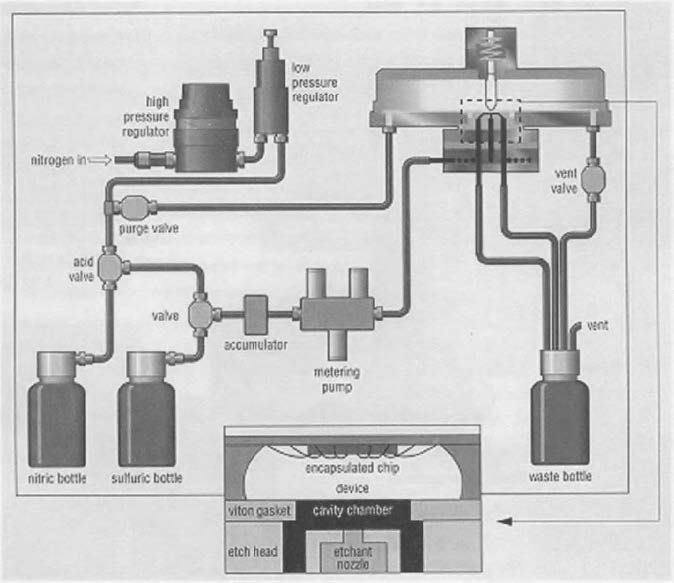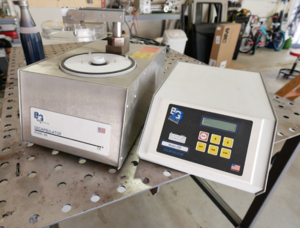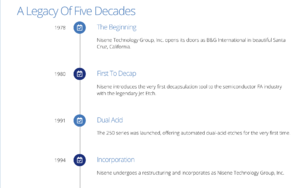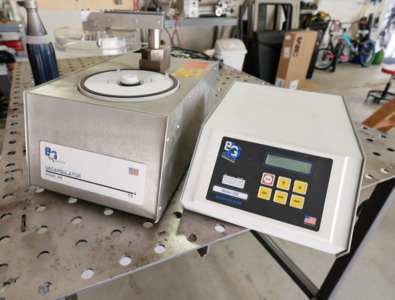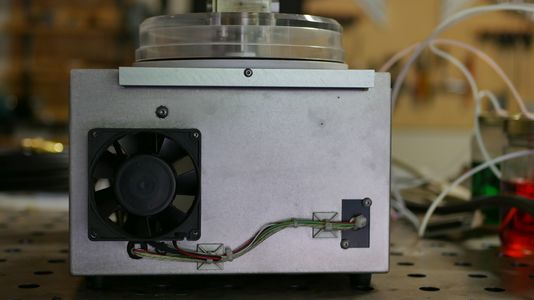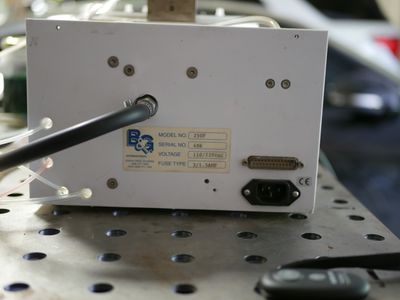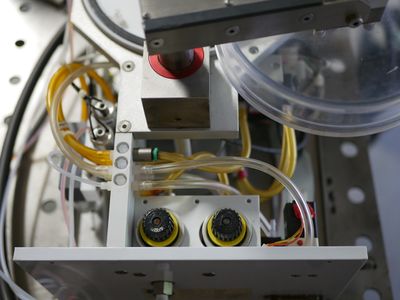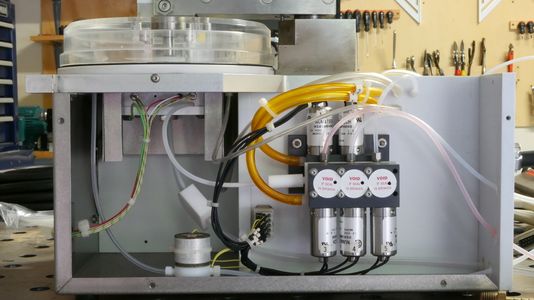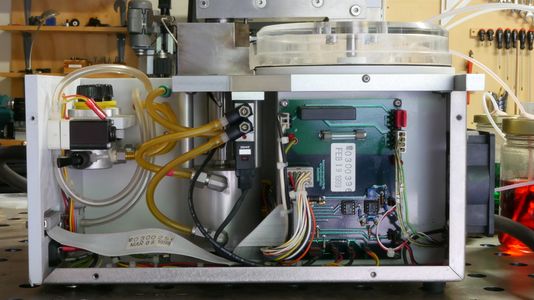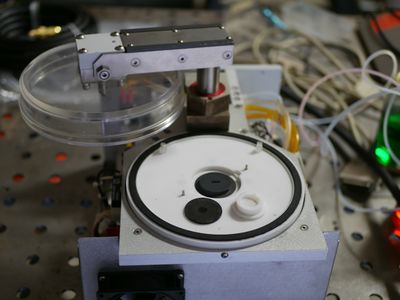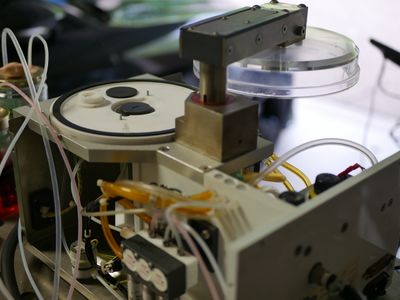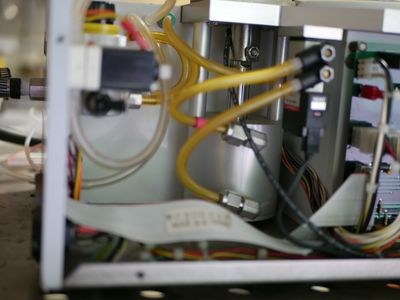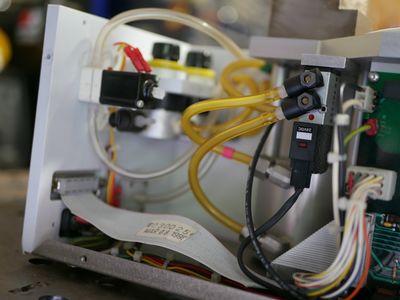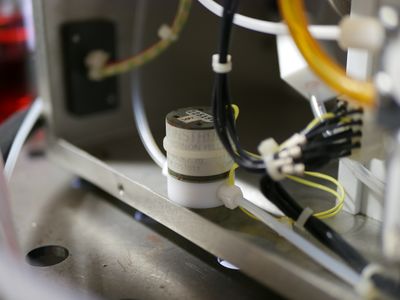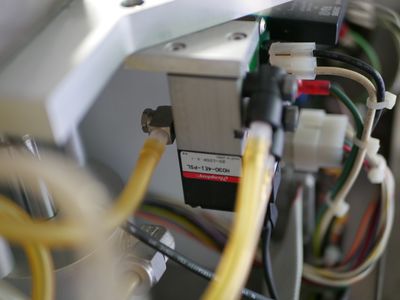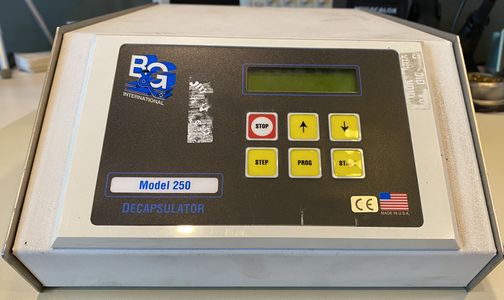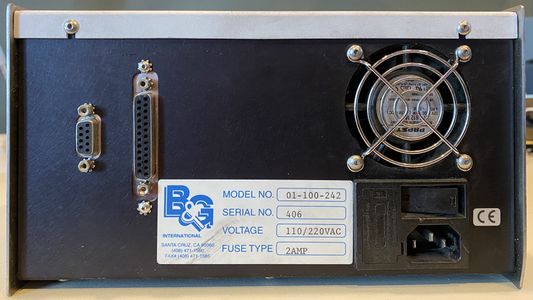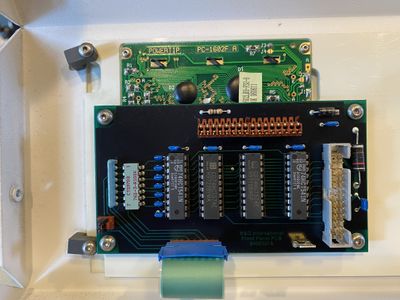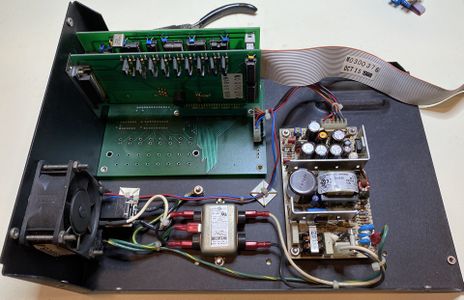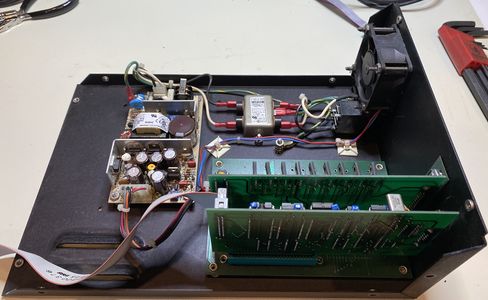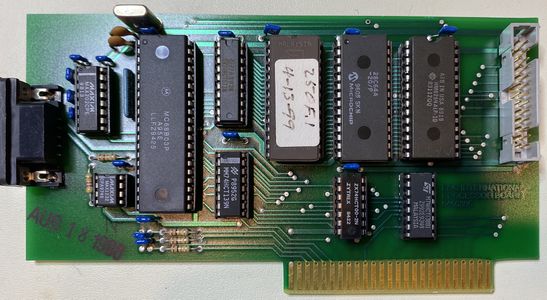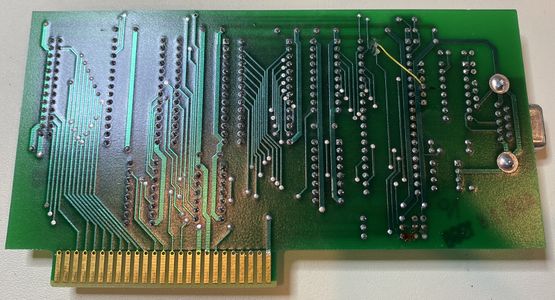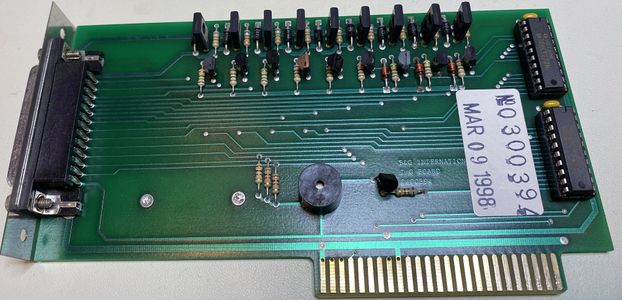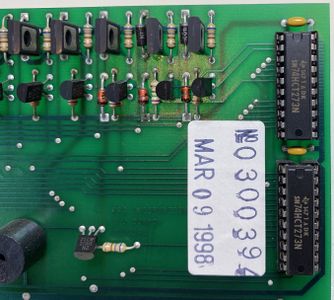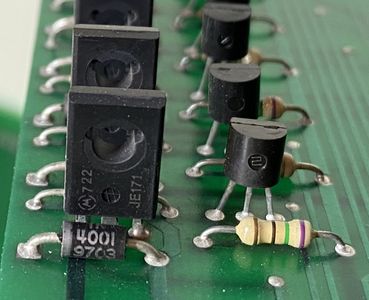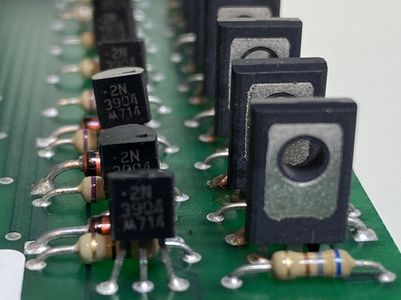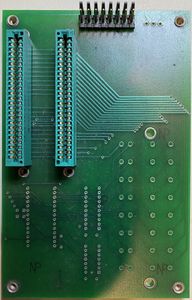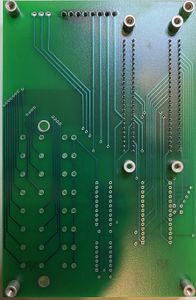Difference between revisions of "B&G International Decapsulator Model 250"
| Line 40: | Line 40: | ||
File:BG Model 250 Controller Internal 1.jpeg|Power supply on the right with EMI Suppression on the bottom. Control PCB's on the top with ribbon cable that plugs into front panel PCB. | File:BG Model 250 Controller Internal 1.jpeg|Power supply on the right with EMI Suppression on the bottom. Control PCB's on the top with ribbon cable that plugs into front panel PCB. | ||
File:BG Model 250 Controller Internal 2.jpeg|Internal view from the other side | File:BG Model 250 Controller Internal 2.jpeg|Internal view from the other side | ||
| − | File:BG Model 250 Controller Processor Board.jpeg|Processor board runs on a Motorola 6803 8-bit microcontroller with an external 8k RAM, 64k EEPROM and | + | File:BG Model 250 Controller Processor Board.jpeg|Processor board runs on a Motorola 6803 8-bit microcontroller at 4.9152 MHz with an external 8k RAM, 64k EEPROM and a 256k EPROM with version sticker on it. |
File:BG Model 250 Controller Processor Board Back.jpeg|Back of processor board, small jumper wire seen on the top right side. This is present on two different processor PCB's I have, not just a manufacturing defect with this board. | File:BG Model 250 Controller Processor Board Back.jpeg|Back of processor board, small jumper wire seen on the top right side. This is present on two different processor PCB's I have, not just a manufacturing defect with this board. | ||
File:BG Model 250 Controller IO Board Front.jpeg|IO Board used to drive valves in Acid Etching unit. a buzzer is on the bottom middle which is triggered when there are errors or user interaction needed in the process. | File:BG Model 250 Controller IO Board Front.jpeg|IO Board used to drive valves in Acid Etching unit. a buzzer is on the bottom middle which is triggered when there are errors or user interaction needed in the process. | ||
Latest revision as of 19:33, 28 June 2020
This tool is used to remove the epoxy package covering the silicon wafer of an integrated circuit, referred to as decapping. This is done by spraying acid into a contained temperature controlled area for a pre-determined period of time. The time, temperature and volume of acid can be controlled by creating programs which are saved within the machine. This leads to repeatable results when decapping IC's for failure analysis, reverse engineering or other endeavors.
This machine appears to be a very early model developed in the mid 1990's by Nisene Technology Group formerly known as B&G International. According to their website, it was the first to feature dual acid etching (Nitric and Sulphuric) technology.
Documentation for this specific unit is nowhere to be found online, every picture or reference to the machine shows paper manuals and all the usual searches on company websites return no results. Nisene was contacted directly but they stated they had no record of any material on this unit.
Some documentation describing similar machines below
- Patent 5,766,496 - Decapsulator and method for decapsulating plastic encapsulated device.
- This patent references the Model 250 as prior art and presents an improvement whereby less acid is used and it appears tighter control over the temperature. The Model 250 heats up a larger area where the IC is placed, this patent seems to describe heating only the acid jet reducing time to decapsulate.
This image from the book "Product Integrity and Reliability in Design" appears to be a schematic of the Model 250.